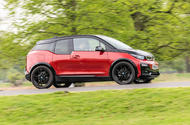Will a larger battery make the more potent version of BMW’s electric hatchback fun to drive outside of commuter hours? We have six months to find out
Why we’re running it: To see whether this trailblazing small EV has evolved enough to still be considered the best in its class
Month 2 – Month 1 – Specs
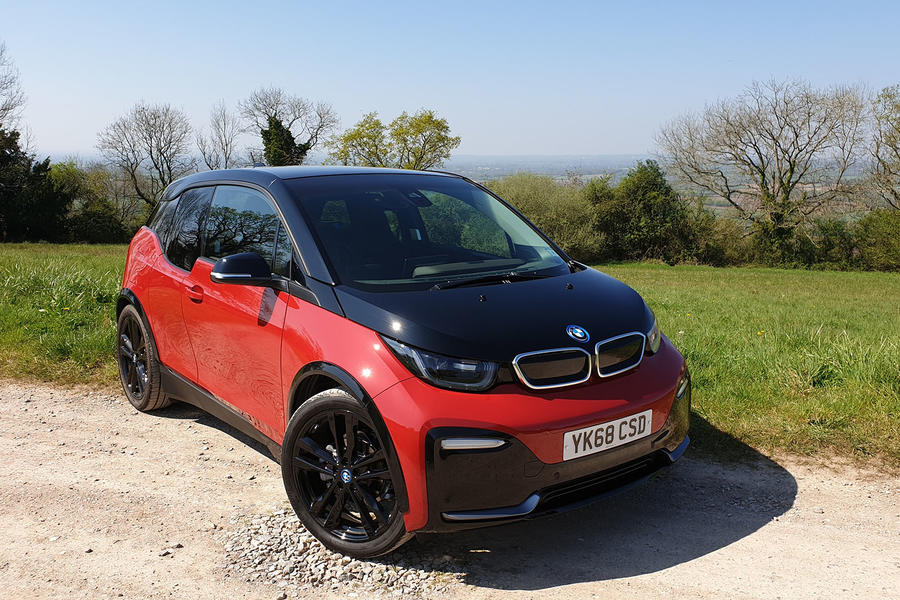
Life with a BMW i3S: Month 2
A USB-powered workaround – 19th June 2019
While iPhone owners will appreciate support for Apple CarPlay, BMW’s refusal to play nicely with Android Auto has made queueing up podcasts a bit frustrating once my phone is sealed in the armrest that doubles as a wireless charger. So I loaded a USB stick with music to control it more easily through the iDrive interface. Good to see the BMW isn’t so picky about rival-branded flash drives.
Mileage: 2119
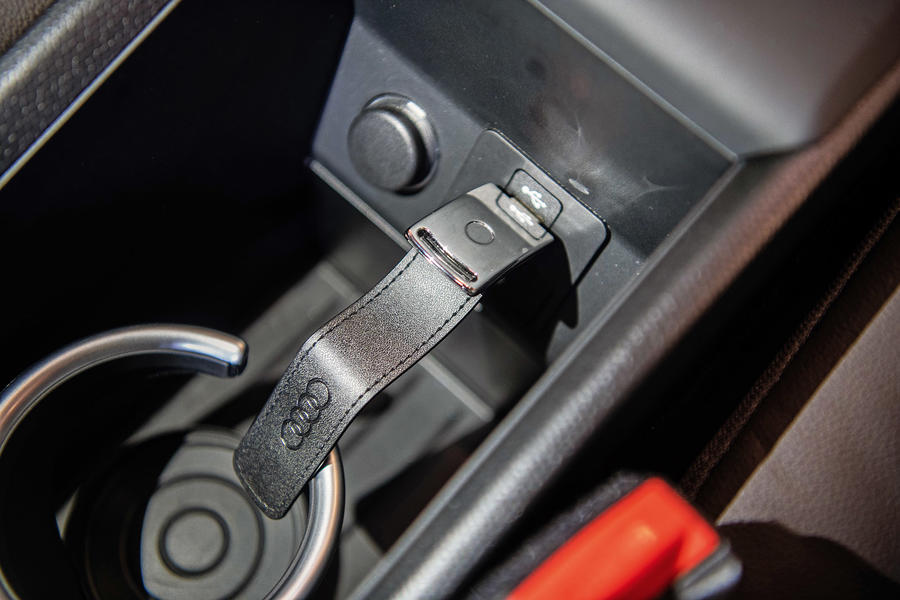
There are two ways to drive the i3 – and both have their benefits – 5th June 2019
Barely a month in and the i3S is cultivating something of a split personality in me, at least when it comes to my driving style.
For my commute, the drive mode is firmly in Sport and the air conditioning on. I’ll even precondition the cabin if the weather looks a bit iffy. With only 17 miles to cover and a charging point waiting for me at the office, there’s no need to conserve power or take it easy off the line at traffic lights. And my word, it feels nippy when you do open the taps, in a way a similarly powerful petrol hot hatch can’t hope to equal.
Learning exactly where the regenerative braking will bring the car to a stop in queues of traffic took a little bit of trial and error, as BMW has calibrated it to be much stronger than in some rival EVs. I was either pulling up short or needed to apply the brakes myself for the first few days, but now I’m almost exclusively using one pedal inside the M25.
For the few longer journeys I’ve managed so far, I’ve noticed my right foot becoming a lot lighter, with adaptive cruise engaged and the drive mode knocked back to Comfort or even Eco Pro to maximise mileage – but I draw the line at switching off the climate controls. (Frostbite and heat exhaustion aren’t on my bucket list, funnily enough.)
I partly put this down to how the i3 displays its remaining charge, with four large chunks of battery gradually slipping away with each passing mile. Once one chunk has disappeared, that’s a quarter of your total range gone, regardless of what the estimated range might be. I think it’s a psychological effect that the Kia e-Niro, with its 18 smaller pips showing how much juice you have left, deals with better.
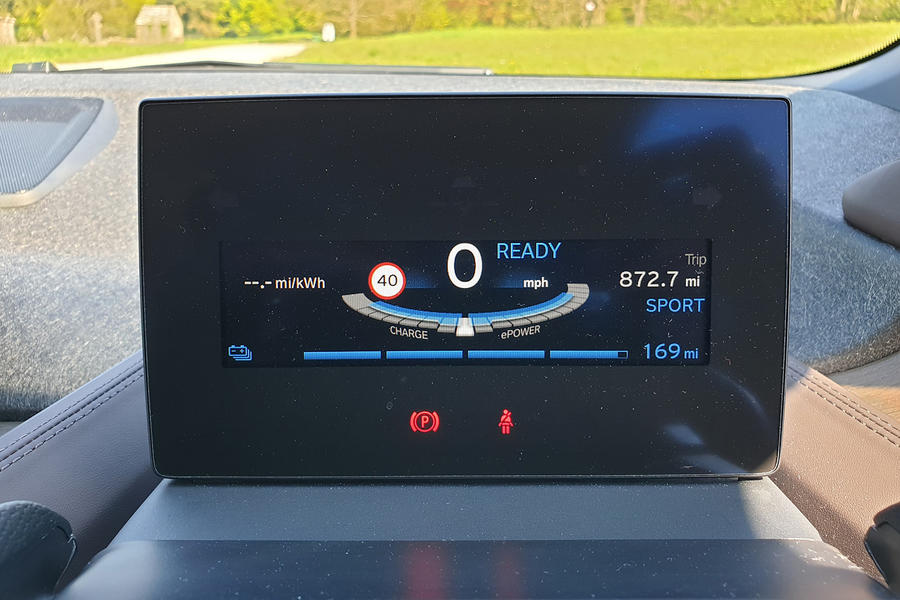
My frugal driving was also influenced by my destinations having only a handful of public charging points, and (in one case) no opportunity to hook up a three-pin plug in case of emergencies. When visiting family on the south coast, the nearest public rapid charger was a town over, and when I got there, it turned out to be broken, despite ZapMap reporting otherwise. The Tesla Model X owner that I beat to the functioning 7kW charger was aghast, and the maximum 30-minute stay meant a scant 20 miles of range gained. Luckily, there were two more 7kW chargers a mile down the road that allowed a longer stay.
On a later trip to Canterbury, I had the option of overnight three-pin charging and my friend’s smart meter indicated £4-£5 spent on a top-up from around 40%. Well worth the round of drinks I bought in return. I’ve been told a good strategy is to sign up for all the major charging networks, so I don’t need to be as picky when it comes to charging, and to aim for rapid chargers along my route rather than seeking them out at my destinations.
There’s little doubt that the sheer number of companies on offer is confusing for the EV newcomer, as are the different payment plans: I initially subscribed to Polar Plus but have a feeling I’ll be adding several more RFID cards to my wallet and apps to my smartphone homescreen in the near future.
Love it:
INSTANT ACCELERATION No hunting for gears, and no waiting for revs to build. The i3’s off-the-line shove is immediate, and really quite rapid.
Loathe it:
NO LOVE FOR ANDROID I listen to a lot of podcasts, but with no Android Auto, there’s no way to queue up a new one while on the move. Annoying.
Mileage: 1873
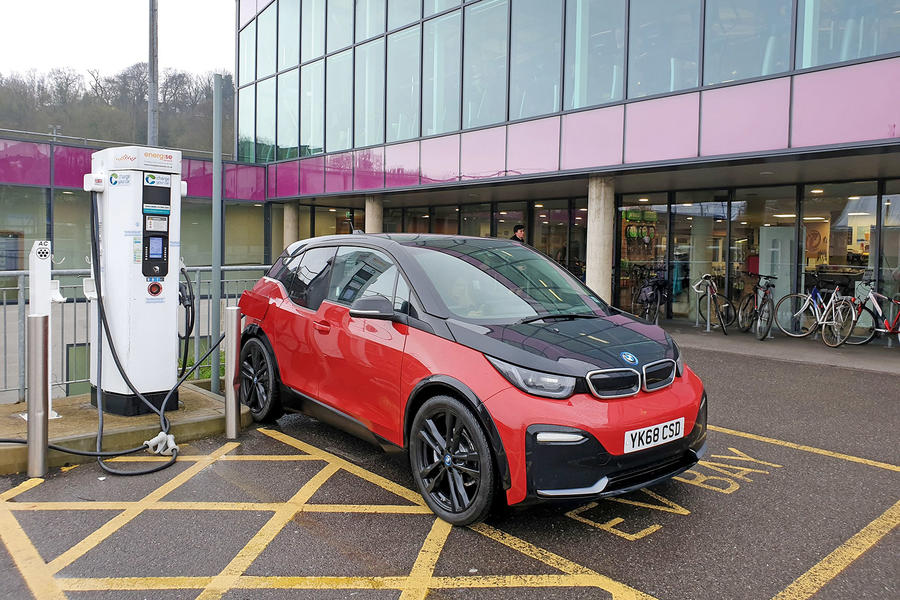
Life with a BMW i3 S: Month 1
Other owners put our range to shame – 23rd May 2019
Using the BMW Connected smartphone app’s driver statistics, I’m doing my best to beat the community averages for efficient driving, energy recuperation and power consumption – but some are easier than others. The high score for furthest distance on a single charge will take some doing – bravo to the owner who managed 228 miles.
Mileage: 1104
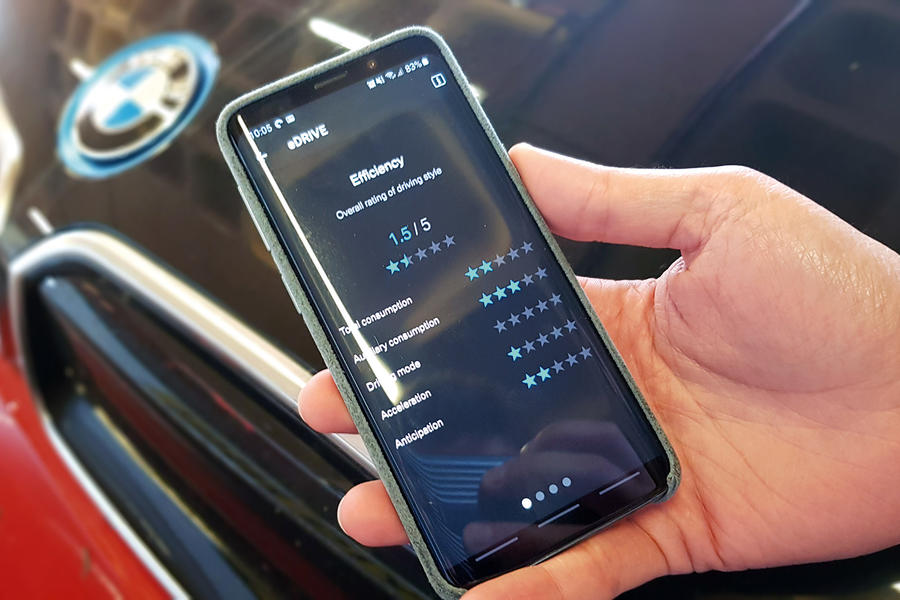
Electric commuter car has six months to prove its worth beyond just city driving – 15th May 2019
The i3 was the original defining electric car. It was BMW’s vision of the future, one that beat Tesla to the mainstream market by two years and aimed to prove that EVs could be different from the established three-box norm.
Five years have passed since it first appeared and, in that time, cheaper rivals have come along. But BMW hasn’t stood still. Today’s i3 exists in pure-electric form only, improved with greater range and a sportier, more engaging i3s version. The arrival of a new 42kWh-capacity battery (120Ah) makes this the ideal time to revisit and see if it’s still the best compact EV out there.
I was deemed its obvious custodian. My commute to and from Autocar’s Twickenham office usually packs me onto six different trains like a sardine for up to two hours each way – a privilege for which I pay £10.50 per day. Travelling by car is slightly faster, even with traffic, but falls foul of the London congestion charge (£12 per day). Even before adding the cost of petrol or diesel, I’d be out of pocket, and the newly introduced Ultra Low Emission Zone ruled out running an old econobox on the cheap.
Over the next six months I plan to spend with BMW’s electric hatchback, I stand to save £1240 on public transport, or as much as £3500 on fuel and toll charges. Sounds like a no-brainer, doesn’t it? There is, of course, the small proviso that I live in a fourth-floor flat. I’m not planning to buy an extra-long extension cord so will be largely relying on public charging points.
The office has a 7.2kW charger, so I’ll be fine during the week. For those longer journeys – and there will be many – I’ll be completely reliant on destination charging, or the odd three-pin overnighter when visiting relatives out in the sticks.
BMW says the i3’s new longer-range 42kWh battery is good for 177 miles under WLTP, but the next six months will likely prove as much a test of Britain’s electric car infrastructure as of this quirky electric hatchback.
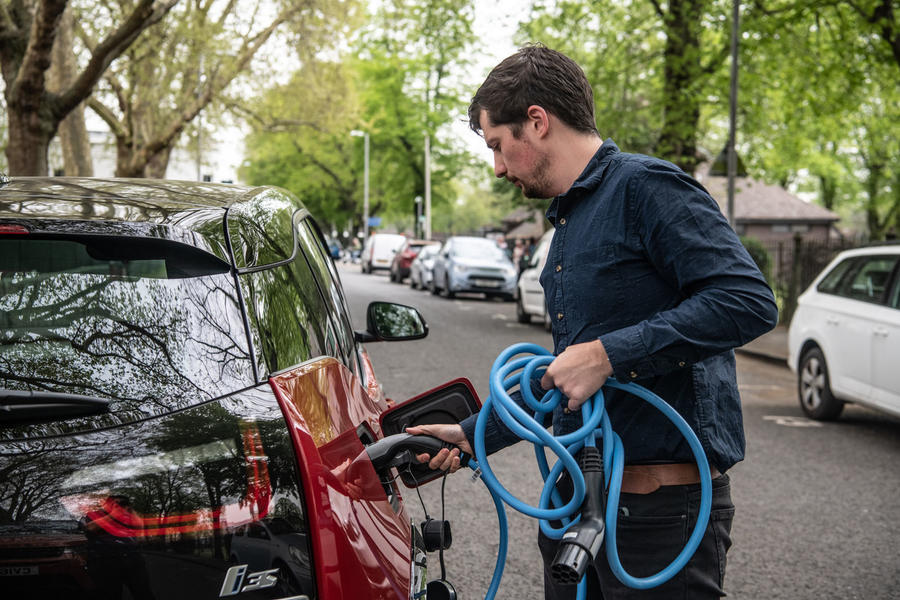
It will also be a test of my restraint, as the 181bhp and a 6.9sec 0-60mph sprint of our more potent i3s is rapid enough to bother some hot hatchbacks. I’m fully expecting the instant torque to be more tempting at the traffic lights, though, where only other EVs have a hope of keeping pace to 30mph.
Our car arrives in two-tone Melbourne Red and Frozen Grey metallic paint on 20in black alloy wheels and BMW’s Suite ‘interior world’ – which means brown leather upholstery and dark oak wood trim to you and me. It’s a combination I wasn’t sure of at first, but it has quickly grown on me. The cabin feels more expansive than it really is thanks to the lack of transmission tunnel and minimal dashboard, and the darker materials don’t make you feel at all confined.
It’s a fully loaded example, with £6135 of options ticked, including the essential (£790 Driving Assistant Plus, £360 reversing camera), useful (£395 wireless smartphone charging, £330 keyless entry) and nice but frivolous (£125 blue seatbelts). The £235 Apple CarPlay preparation will largely go unused, as I have an Android phone. Unfortunately for me, BMW and Google don’t yet see eye to eye, so it’ll either be a dashboard mount or the built-in iDrive infotainment for navigation and media. Thankfully, there is an Android version of BMW Connected, the smartphone companion app that will grade my driving on a five-star scale, let me send navigation directions remotely and pre-heat the cabin for any cold morning commutes – at least those when I’m not desperately trying to conserve battery.
Factor in the government electric car grant and you’re looking at a £40,305 outlay, making this very much a premium choice among city-friendly EVs. BMW says 60% of customers think it’s worth the extra over the vanilla i3. It has six months to convince me of the same.
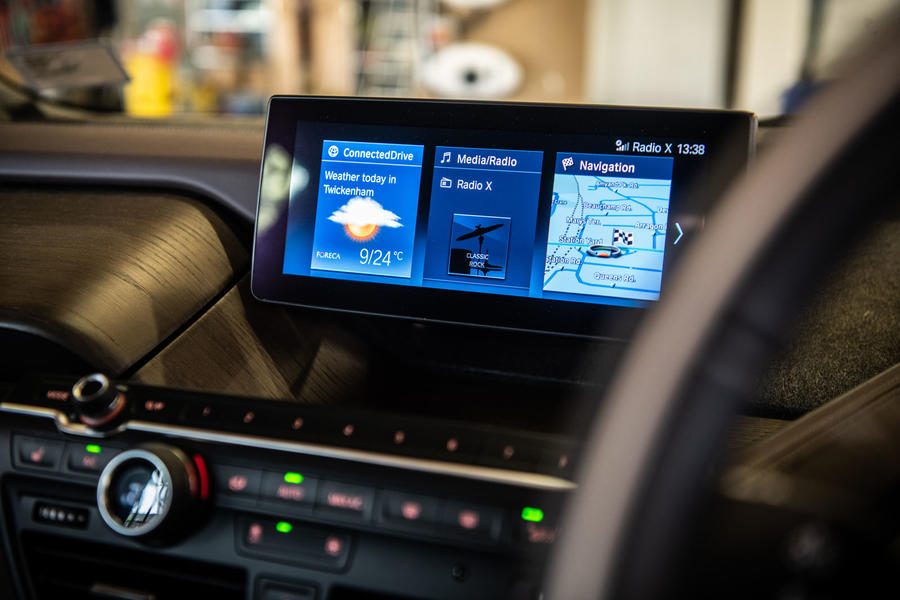
In the 1000 miles I’ve spent with the i3s so far, the inability to charge at home has yet to make this venture a literal non-starter. Even with a lead foot, I can usually make it from the office and back with only around a quarter of the battery drained. Fully charged, the impossible-to-miss remaining battery indicator on the dashboard informs me it has 155 miles in reserve, jumping to over 190 if used in Eco Pro+ mode.
This reduces top speed to 56mph and throttle response to something altogether more restrained while disengaging the climate controls and switching off the heated seats. I’m hoping that will be something of a last resort for all but the longest of journeys. I’ll be interested to learn how quickly the battery can be sapped at a 70mph motorway cruise.
I haven’t felt the need to curse the giant alloy wheels or sportier suspension yet, although the i3s does certainly ride rather firmly for a car most at home in the city. I’m looking forward to driving on more engaging roads, when I know I have a charging point waiting for me at the end, to see if it delivers on the promise of engaging handling.
I’ll also be after any tips on hypermiling and squeezing out every drop of range from a charge, so if you have any, please get in touch. I’m probably going to need them.
Second Opinion
To my mind, the i3 has always been a brilliant flag bearer for electric mobility, but flawed in several important design aspects and in some of its minor details. The question this test should answer is whether it’s a flawed genius, or just frustratingly short of the very best.
Jim Holder
BMW i3 S specification
Specs: Price New £34,170 (including government grant) Price as tested £40,305 (including government grant) Options Melbourne Red paint £550, i3s Plus package £1100, Suite interior £2000, keyless entry £330, reversing camera £360, blue seatbelts £125, eDrive exterior sound £80, front and rear parking sensors £170, Driving Assistant Plus £790, Apple CarPlay preparation £235, enhanced Bluetooth with wireless charging £395
Test Data: Engine electric motor Power 181bhp Torque 199lb ft Kerb weight 1265kg Top speed 99mph 0-62mph 6.9sec Range 177 miles (WLTP) CO2 0g/km Faults None Expenses None
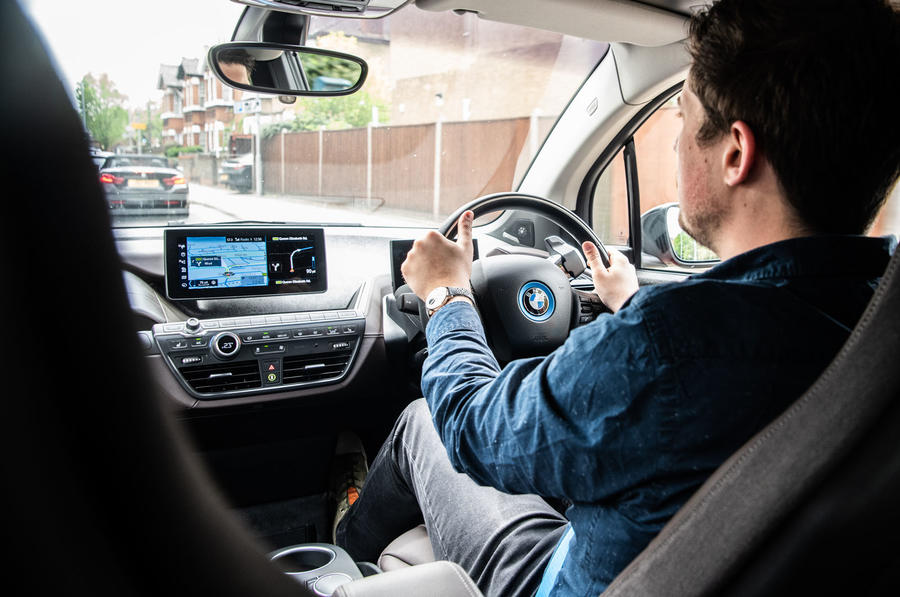
Source: Autocar
